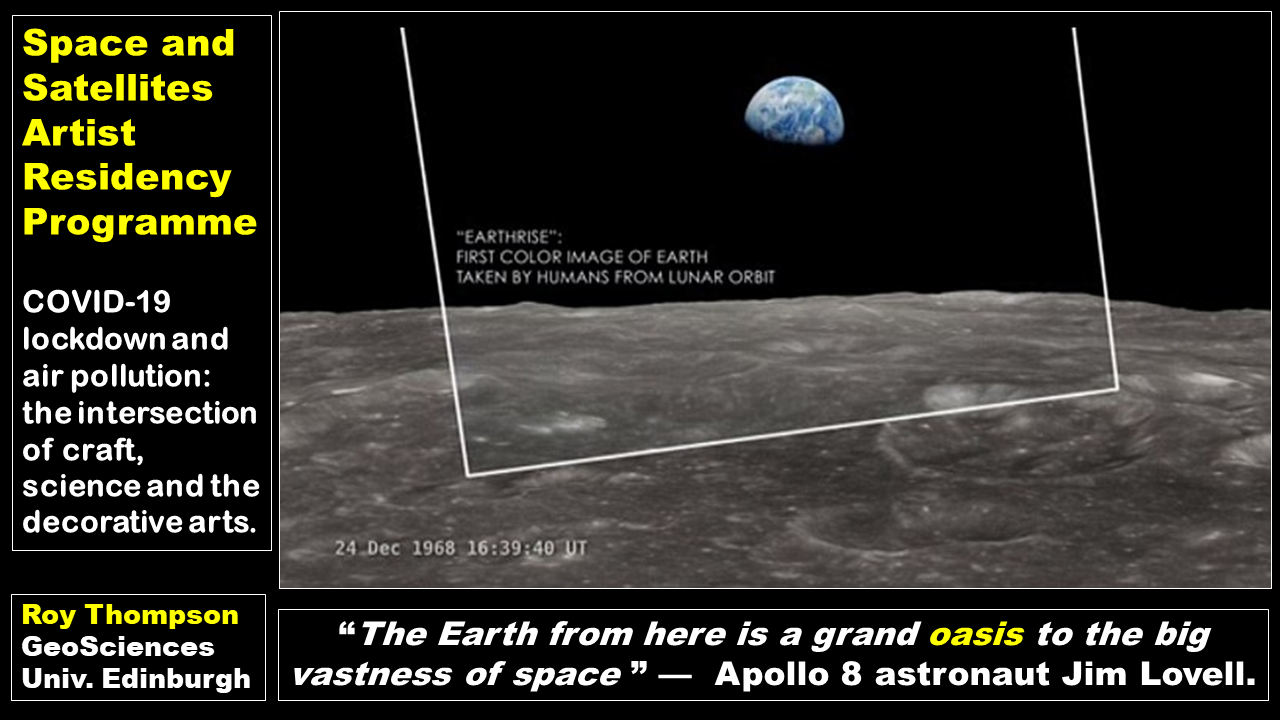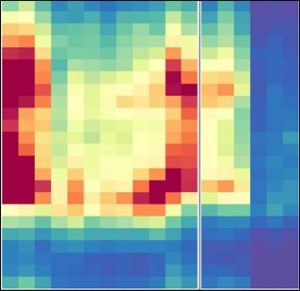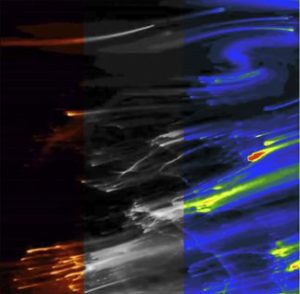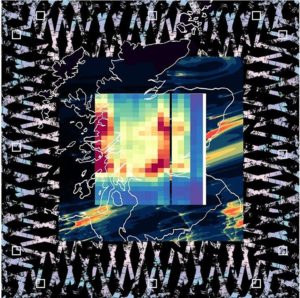Glimmer of hope XXV
Free Zoom webinar (Thursday 9th July 16:00 British Summer Time)

During Covid I began blogging about geo-statistics, predicting Covid deaths in countries all around the world, and UK air-pollution. E.g.
https://blogs.ed.ac.uk/roythompson/2020/05/04/covid-19-and-the-edinburgh-congestion-charge/
‘EVERYONE: Making data tangible through material cultures’.
One of my blog page images is to be exploited by a group of artists who are designing a large scale tapestry. The Zoom webinar, to which you are invited (!), is for the artists to describe the process. Also a colleague, Dr Massimo Vieno of UKCEH , has joined in to produce a video of chemical air transport of NO2 across Europe during Covid, which – weirder and weirder – will also be incorporated into the tapestry. And I will aim to say something about the science…
Here is the weblink to book a (free) Zoom place (Thursday 9th July 16:00 British Summer Time), with more details of the event given below.
Eventbrite page link here- https://www.eventbrite.co.uk/e/space-satellites-artist-residency-talk-stacey-hunter-ben-hymers-tickets-112198169746



(© Brendan Mc Carthy <ray.interactiv@gmail.com>)
Summary
As part of the Space and Satellites Artist Residency programme we are running a series of Work in Progress events for our research webinar series and each week we will hear from the artists on their experiences so far and a glimpse as to what is to come for our exhibition in July. In the fifth of our talks curator Dr Stacey Hunter, and weaver Ben Hymers, will talk through their data-derived tapestry project ‘EVERYONE: Making data tangible through material cultures’. Stacey and Ben will be joined by their scientific collaborator Professor Roy Thompson, an environmental geophysicist.
Sitting at the intersection of craft, science and design, EVERYONE considers the environmental impact of Covid19 lockdown on Edinburgh through the medium of a large scale tapestry. The global impact of Covid19 has not only overridden our familiar routines and preoccupations, it has in effect created a giant natural experiment. We were interested in how to take this unique opportunity — where whole new datasets have been unexpectedly created, where we have the opportunity to coax nature into helping us understand the natural world and ourselves better — and to record it using the historic traditions of weaving.
EVERYONE examines data sets derived from three separate vantage points: global, regional and local. The project has created a narrative about the impact of lockdown in relation to climate and environmental change. The piece explores, in an aesthetic sense, how data can be abstracted and made figurative by layering of images and experimenting with scale. It illustrates the power of the handmade and digital processes in conveying – to use the words of world renowned Scottish weaver Archie Brennan – “concept, comments, harmony, discord, rhythm, growth and form”.
Design curator Dr Stacey Hunter will discuss how the team who share an interest in creativity and collaboration have brought a diverse but complementary set of skills together. She will present how as a team decisions were made about how best to utilise the vast and varied amounts of data available and how to ensure that both narrative impact and scientific rigour were kept in balance.
Ben will talk about Tapestry Weaving and its relationship to early computer science, memory and NASA. As well as the inspiration behind the Space and Satellites tapestry cartoon and samples.
Professor Roy Thompson will discuss how examining data during the COVID-19 lockdown can illustrate what can be learnt from this grand natural experiment. His work highlights the pressing need for low-emission zones and congestion charging in urban areas. The Covid situation demonstrates how early actions can save lives. The question then arises: does society truly understand the future of our world in the context of the ever greater threat of climate change?
It is hoped to premier a short lyrical video (© UKCEH) created to illustrate changing air-pollution patterns across Scotland through lockdown.
The team includes Dr Stacey Hunter, Ben Hymers, data visualisation designers Sam Healy and Brendan McCarthy of Ray Interactive, environmental geophysicist Prof Roy Thompson and air pollution modeller Dr Massimo Vieno of UKCEH.




Recent comments